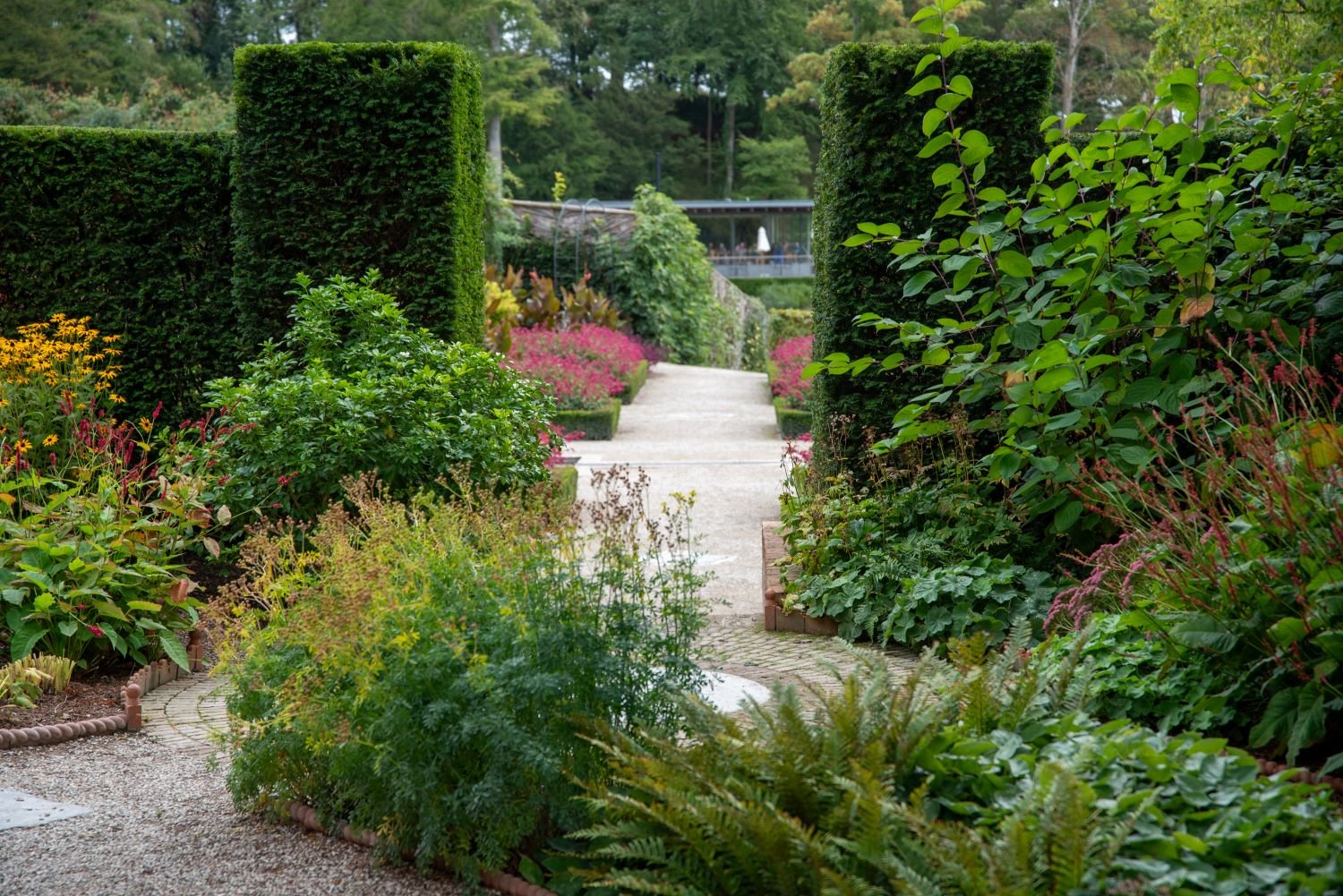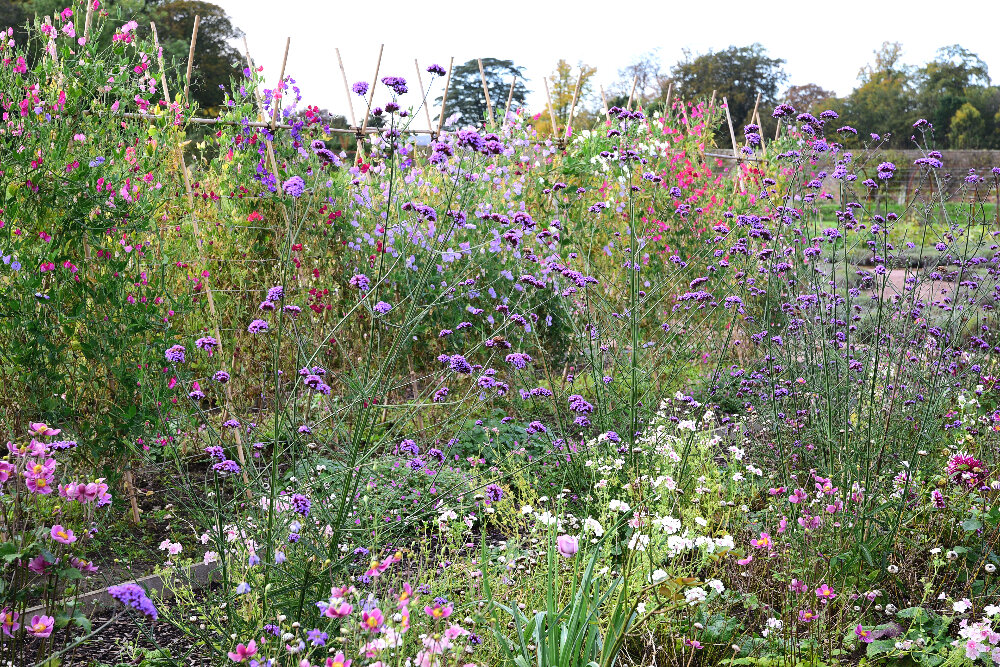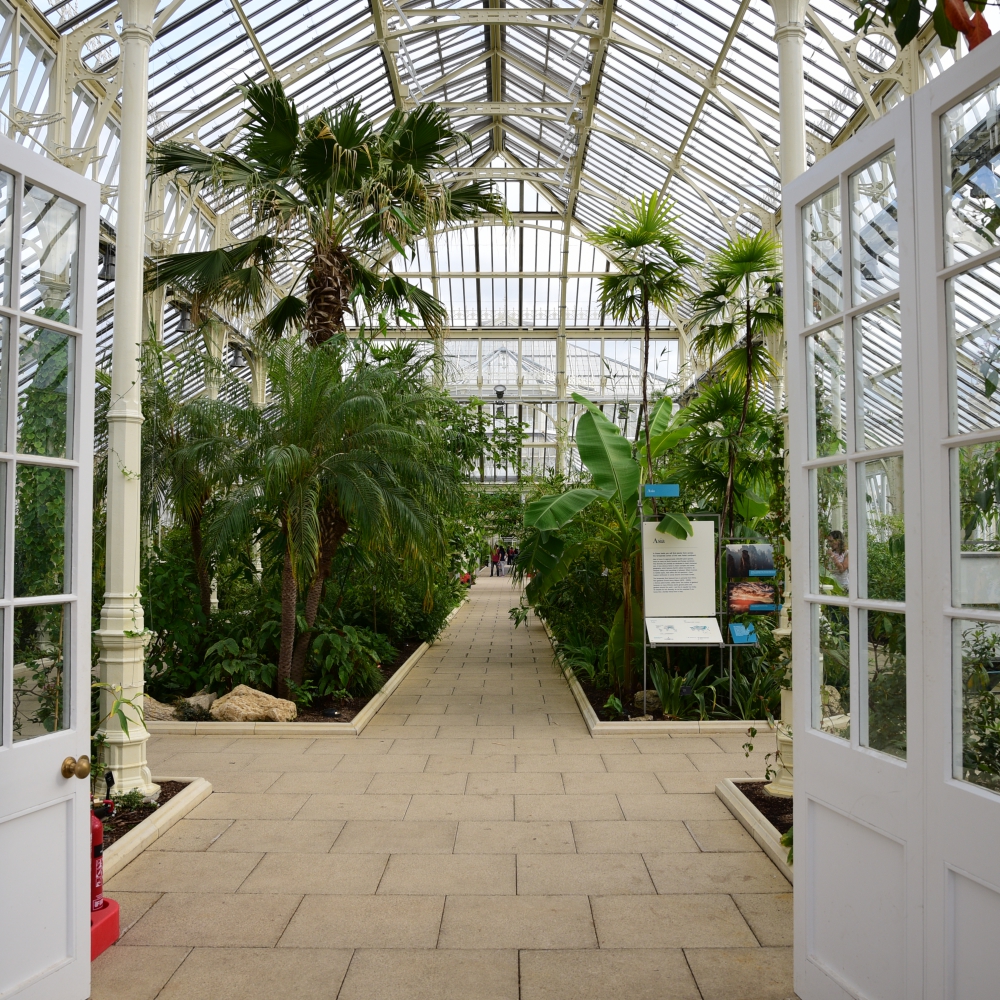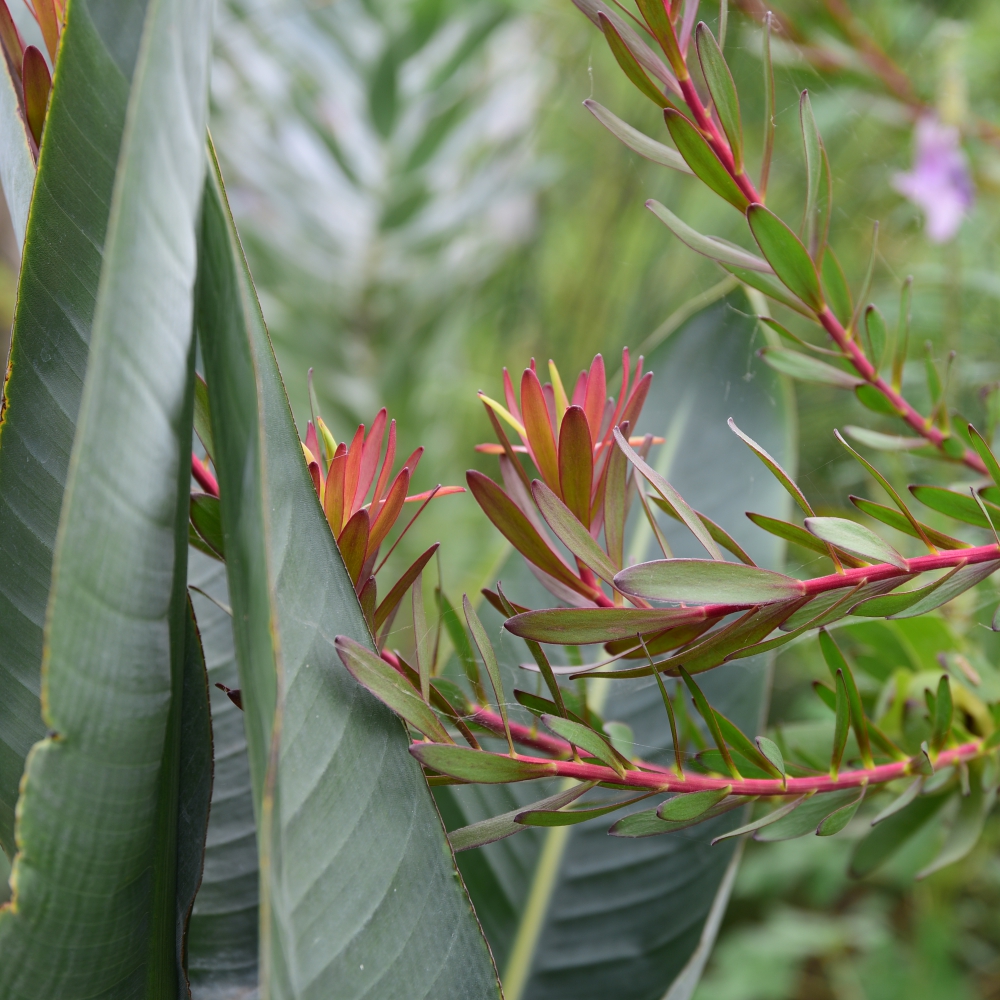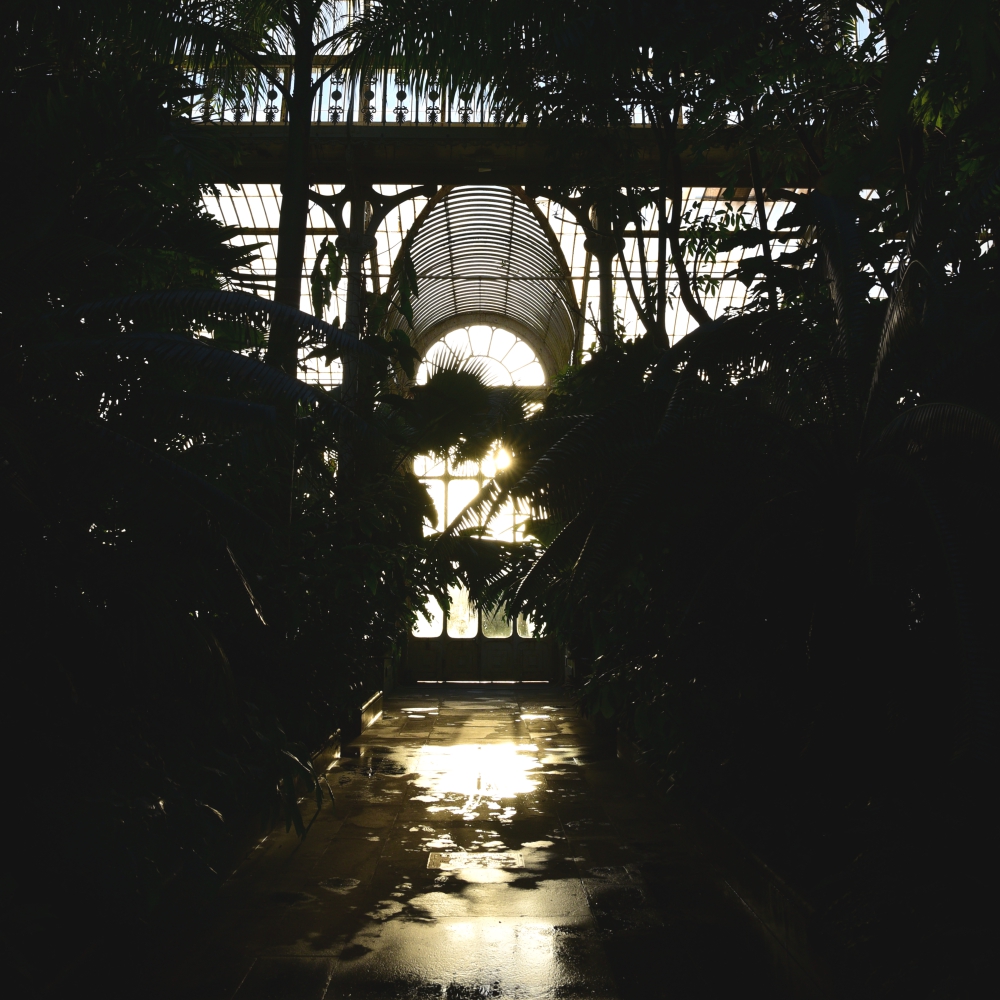2023, a year in photos
I googled “what will 2023 be famous for?” There were some forecasts - war, climate catastrophe, financial turbulence and technological change - so far, so predictable. But a fashion trend for blackened teeth thankfully hasn’t come to pass (or did I miss it?).
Wimbledon Common in January
The year started with a famously cold January. It was a near record of eight days in a row of freezing temperatures. Whilst Wimbledon Common looked fab in the heavy frost the weather took its toll in the garden. Many people lost plants, in particular Hebes, Erigeron karvinskianus and Penstemons. They were hard to replace initially as the frost had affected so many gardens as well as suppliers in the UK and Europe.
Cyclamen at Wakehurst Place in February
One answer to this is to plant a winter garden, full of plants that look their best at this time of year. I went to visit Wakehurst Place which has a fairly new winter garden. It didn’t disappoint and partly as a response to this we have developed a couple of winter borders in my local park.
Magnificent magnolia in Bushy Park in March
A persistent easterly wind in March and April meant that spring felt like a long time coming but finally, after a few false starts, I got on a plane for the first time in three years to go to the garden island of Madeira.
Fanal Forest, Madeira, in April
There were gardens aplenty on the island but one of the most fascinating sights was the ancient laurel forest on the north slope. Subject to frequent fog and mist the trees were already mature when the Spanish arrived in the 14th century. It is an eerie place and, as I found, it’s very easy to get lost.
Bluebells in the Surrey Hills in May
May was a busy month. The weather warmed up a little and I found a great new bluebell wood in the Surrey Hills. The sun also came out for the Chelsea Flower Show and there was only one garden everyone was talking about - Sarah Price’s iris garden. It wasn’t overrated, almost worth the ticket price on its own.
Chelsea Flower Show in May
Also in May I finished planting a new garden in Wimbledon. Throughout the year I have continued as a volunteer gardener in my local park. Luckily the summer wasn’t quite as scorching as 2022. The ox-eye daisies in a wildflower part of the park were stunning in June.
Ox-eye daisies in June
All through 2023 I have been learning how to use a 3D design software package. It has been challenging to say the least but considerable progress has been made. I’m not sure I’ll ever reach guru status, but it’s good to get to a stage where clients can see their prospective gardens in 3D and even walk through them. I haven’t had a client yet say they prefer the old hand-drawn way of doing things.
Cedar greenhouse in July
In July I caught up with a friend who I’d helped with the layout of her garden ahead of the installation of a new greenhouse.
Waterperry Gardens in August
In August there was an overload of garden visits to Ham House, Waterperry Gardens and the best garden I’ve seen in a long time, Le Jardin Plume.
Le Jardin Plume, Normandy in August
Whilst in France I also visited the garden festival at Chaumont and the formal gardens at Chenonceau.
Chenonceau in September
Autumn took a long time to arrive, an unexpected heatwave followed by what seemed like endless rain, and then finally, some spectacular colour. Piet Oudolf describes a fifth season, somewhere between summer and autumn. The garden at the Hepworth Wakefield is a great example of how good a garden can look at this inbetween time.
Allium sphareocephalon and Perovskia in October
And my photographic year ends there, somewhat abruptly. The big camera is out of action and the camera on my phone doesn’t really cut it as a replacement. Normal service will be resumed shortly, hopefully in time for some winter photography.
Gifts for gardeners
It’s back, the only reasonably sensible list for gardeners of all types, no cashmere pyjamas or pink suede gauntlets here…
These are two of my favourite coffee table purchases of the year. I enjoyed my visit to Le Jardin Plume so much I bought the book. Yes it is in French but you don’t need to be fluent to get the gist of what’s going on. The photos tell the story, and the photos are fab.
I’ve been going to Kew Gardens since I was knee high to a grasshopper but only went into the Marianne North Gallery for the first time earlier this year. All of the 627 paintings - part botanical illustration, part travelogue - are reproduced here. Marianne North visited 13 countries and four continents in the second half of the 19th century and she paid for the construction of the gallery to house all her paintings. A major vanity project? And so what.
Sarah Price’s garden at the 2023 Chelsea Flower Show
Well no list is complete without a ticket to the Chelsea Flower Show. Is it expensive, is it over crowded, is it worth it? Hell yeah. The RHS runs one or two other shows which are all a bit cheaper, a bit less less busy and, well, you get what you pay for….
Looking for an easy way to boost your garden’s attractiveness to wildlife? Just add water. Birds, insects and mammals will all find a small pond very appealing. It doesn’t have to be deep, or have a fountain or even require digging a big hole.
A shallow water bowl or bird bath will do the job. A few pebbles and a couple of plants will finish it off nicely.
West Green House gardens and caff
Who doesn’t enjoy a nice garden visit with a fabulous lunch thrown in? Top of my list is Gravetye Manor (still waiting..), The Newt was fab and the cafe at West Green is a little more modest but no less tasty.
The restaurant at The Newt
Most gardeners are suckers for tools, especially really good quality ones. I’ve mentioned Felco secateurs before, as well as Showa 370 gardening gloves, Silky Fox folding saws, Hayter lawnmowers and Henchmen ladders.
Fab even when not in use
And they also love seed trays, garden twine, small terracotta pots, compost (but so awkward to wrap…), magazine subscriptions, bird boxes, seeds and cake of course.
Cedar greenhouse
But nothing says I love you like a bespoke cedar greenhouse…
And finally, what not to buy a gardener unless they have specifically asked for it - a plant. You have no idea how difficult it is to accommodate a rose that’s the wrong colour, or an inappropriately sized tree, into a carefully curated garden.
Gordon Castle Walled Garden
It’s been five years since my last visit to Gordon Castle. Quite a lot has changed since then. In 2014 the garden had only recently been designed by Arne Maynard.
The basic layout was in place with paths and borders outlined and most of the central vegetable beds were fully stocked and ready for harvest. Some of the earthworks were in place but hadn’t been grassed over. For such a huge garden it looked like there was still an enormous amount to do.
Clearly the gardeners have been busy.
The garden is huge, 200m x 200m, and must have required a an enormous number of staff to keep it going in its heyday. Following the second world war the lack of manpower meant the garden had to be turned over to less intensive agriculture and in the 1950s it was mostly used for growing raspberries commercially.
A restoration programme was begun in 2013 and now the garden employs some 65 people. Clearly some features such as the pear tunnels and grassy mounds will take some time to mature, but the fruit and vegetables and cutting garden areas are thriving.
Even in October there was still lot to see. Although all the fruit from the 249 veteran espaliered fruit trees had been picked some of it was for sale.
The garden supplies produce to the cafe. As garden cafes go this one is excellent and a visit to the cafe gives you a discount for entry to the garden.
A visit to a good garden late in the year gives you a good idea of what will do well locally. The walls here create something of a mini micro-climate allowing a longer than expected growing season. Although in London Dahlias, Gaura and Anthemis might still be in flower this late, Ammi visnaga probably isn’t.
The garden is open all year, pretty much everyday. The cafe is worth a visit on its own, it has not one but two log burners. I imagine they’re both needed in winter. The castle itself is not open to visitors.
If you’re the hunting, shooting, fishing type there’s lots for you here.
Gordon Castle Walled Garden https://www.gordoncastle.co.uk/garden/
The Temperate House at Kew
The last time I was at Kew the Temperate House was still being renovated. It reopened in July after a five year restoration project.
Like The Palm House, it was designed by Decimus Burton and opened to the public in 1863. The Temperate House is twice the size of its neighbour and is the largest Victorian glasshouse in the world.
As the temperate zone is where most of the world's population lives many of the plants here face the combined threats from climate change and human population growth.
Indeed The Temperate House contains the only known living specimens of some plants. Like Encephalartos woodii, a cycad from South Africa. Only one has been found in the wild and an offshoot was sent to Kew in 1899. It is a male and no females have ever been found.
The Temperate House is divided into zones representing Australia, New Zealand, the Americas, Asia, Africa, the Himalayas and 16 islands. Many of the species housed represent human, animal and insect food, garden plants, plants with cultural uses, plants used in building, manufacturing and medicine. Kew safeguards their future by banking the seed at its Millennium Seed Bank in West Sussex.
The light in The Temperate House is beautiful. On a sunny day the shadows from the structure run across the leaves and paving. As the plants grow this will probably become less of a feature. For now though it looks very modern, if only more conservatories looked a bit like this.
As part of the renovation there has been an effort to make the glasshouse more of an experience than just a scientific collection, with a waterfall and a dramatic collection of tree ferns running along a dry riverbed.
The Temperate House contains plants not quite hardy enough to survive an English winter. However, I think with the right care and location in your garden, in London you might risk planting tree ferns. The false banana, Ensete ventricosum below, and exotic gingerlilies, would defintely need to be brought inside though. That's fine if you've got somewhere suitable to house it, otherwise best leave it to Monty Don.
To truly appreciate the splendour of the architecture you can climb the spiral stairs to the gallery and get a view of the central area.
I look forward to seeing how the planting develops. It's almost worth the £17 entry fee to Kew Gardens on its own.
The Temperate House - https://www.kew.org/kew-gardens/attractions/temperate-house
Lukesland Gardens
I feel very lucky to have friends with friends with amazing gardens. Last weekend I stayed with John and Lorna Howell, owners of Lukesland in Devon.
The garden covers around 26 acres of woodland, streams, arboreta (there's more than one), rhododendrons, azaleas, wild flowers and a kitchen garden.
The garden was started by the Matthews family in the 1860s, followed by the McAndrews in the 1870s, but has been tended to and developed by the Howell family since the 1930s.
The garden has become known for some of its "Champion" trees, which means they are the oldest, tallest or with the largest girth in the county or country. The high level of rainfall, acidic soil and mildish climate makes it ideal for Camellias, Rhododendrons, Azaleas and Magnolias.
.I was told the Rhododendrons were past their best by the end of May but they still looked pretty good to me. However, this is prime Azalea flowering time, the reflections in some of the ponds were particularly stunning, better than the Isabella Plantation I think.
For me the streams and ponds are the highlight of the gardens. Addicombe Brook tumbles through the garden over cascades and Dartmoor granite rocks. It's not without hazard though as floods in recent years have washed away paths, bridges and sculpture and silted up ponds. They've been rebuilt and restored and you'd never know there'd been such devastation.
The wild flowers are also particularly attractive. There are bluebells in the Beech wood and in the Pinetum where they flower in the open with grasses, and along the stream with Red Campion.
The dampness means plants like Iris sibirica, asiatic Primulas, Gunnera and ferns thrive here, as well as some of the trees like the giant coastal Redwoods from the USA.
Lukesland is particularly well known for its three large Davidia involucrata, also known as the Hankerchief Tree, which were flowering during my visit. Unfortunately none of my photos could do them justice but if you're in the area in late spring seeing them is worth a visit on their own.
Although the tea room was busy (and yes I can recommend all the cakes as I tried most of them whilst serving the tea...) the gardens are so large it's easy to find a quiet spot to yourself.
One of the advantages of staying overnight is the opportunity to get up at the crack of dawn and wander around on your own, although the weather conspired against me and I didn't quite get the mist and low sunlight I was hoping for. Next time maybe...
The gardens are only open in the spring and then again in the autumn as the foliage of the Rhododendrons, Azaleas and Acers is stunning I'm told.
This garden is maintained by Lorna and John, John's mother Rosemary (who runs the guided tours) and three very part-time gardeners. Hats off to them all.
Lukesland - http://www.lukesland.co.uk/Index.htm
You can rent a cottage in the grounds - https://www.helpfulholidays.co.uk/cottage/Devon-East-Anstey/The-Clock-House-976251.html
Many thanks to John and Lorna and Rosemary and Desna (and Rob..).
The Palm House at Kew
A full six days after getting off the plane from Barbados I found myself in the tropical Palm House at Kew Gardens. It's some years since I've been in here and now with a little more knowledge (but not much more) I enjoyed the heat and atmosphere, complete with song birds (well, a robin).
The Grade I listed Palm House was built in 1844, designed not by Joseph Paxton as I'd always thought, but by Decimus Burton. It was built specifically for tropical plants brought back by Victorian plant hunters. The glasshouse is thought to resemble the upturned hull of a ship and indeed some ship-building techniques were used in its construction.
"The Palm House recreates a rainforest climate, a living laboratory supporting a diversity of plants from the tropical regions of the world, all under one roof. The plantings simulate this multilayered habitat, with canopy palms and other trees, climbers and epiphytes down to the shorter understorey plants and dwarf palms. Many plants in this collection are endangered in the wild, some even extinct. There are many species here studied by Kew scientists for research into medicines."
There are plants aplenty here that grow in the Caribbean - bananas, plantains, hibiscus, gingers, more palms than you can shake a stick at, plus coconuts and sugar cane. And from the far east, orchids and spices - pepper, vanilla, and the "Marmite" plant - bamboo. From Australia there are macadamias, from South America Brazil nuts.
As a garden designer the main attraction of tropical plants is their sheer exhuberance - the rate at which they grow due to high levels of light and moisture, the varied size, shape and texture of their foliage and (usually, though not at this time of year in this country it seems) the bright colours of their flowers.
The quality of light, particularly how bright sunshine (on a March day) filters through the foliage is rather fab, creating strong archtectural shadows and a green, almost underwater atmosphere.
The planting wouldn't appear anywhere as spectacular were it not for the architecture of the Palm House itself. It may look like an upturned hull from the outside but on the inside there's more than a whiff of Paddington Station.
The soaring arches and seemingly impossibly narrow ribs of wrought iron create and ornate backdrop to the plants.
And, as many people know, I can't resist a bit of rust, patina and condensation. The maintenance of the building must be a costly and time-consuming exercise. Is this why the entrance fee to Kew Gardens is £17?
Although the original design was reined in somewhat there are the customary Victorian flourishes showcasing what could be achieved for this new method of manufacturing iron.
The curved ceilings are designed to capture the maximum levels of sunshine. Only later was it realised that many tropical plants prefer shade and dappled light so manganese oxide-free glass, tinted green with copper oxide was installed to diffuse solar gain and approximate the light conditions in a tropical forest.
On a sunny spring afternoon the sun was setting directly behind The Palm House, creating spectacular shadows and from the outside the whole glasshouse looked illuminated.
The Royal Botanic Gardens, Kew - https://www.kew.org/
To read more about the design and construction of The Palm House - http://www.engineering-timelines.com/scripts/engineeringItem.asp?id=97





















